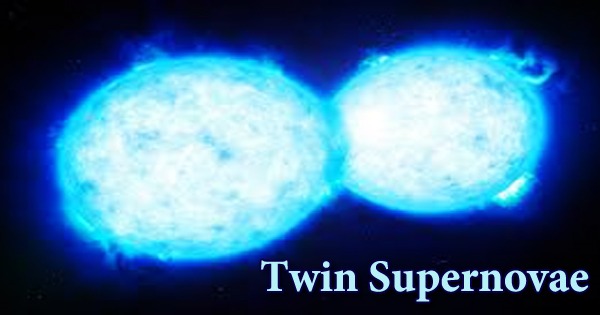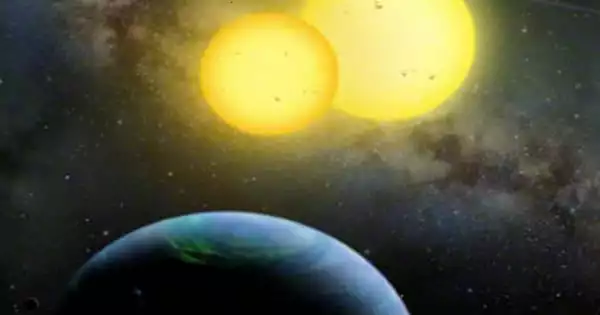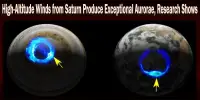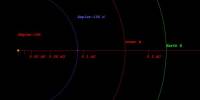Cosmologists have discovered a way to double the precision of one of their tried-and-true instruments for researching the enigmatic dark energy that is speeding up the expansion of the universe: calculating distances to supernova explosions. These experiments’ results may aid researchers in improving dark energy experiments at large telescopes. The Nearby Supernova Factory (SNfactory) collaboration, led by Greg Aldering of the Department of Energy’s Lawrence Berkeley National Laboratory (Berkeley Lab), will enable scientists to research dark energy with much greater precision and accuracy, as well as provide a powerful crosscheck of the technique over vast distances and time.
The results will also be key to major upcoming cosmology studies that will explore possible theories for dark energy using modern ground and space telescopes. These results were reported in two papers published in The Astrophysical Journal, with Kyle Boone as the lead author. Boone, who is currently a postdoctoral fellow at the University of Washington, was a former graduate student of Nobel laureate and Berkeley Lab senior scientist and UC Berkeley professor Saul Perlmutter, who headed one of the teams that first discovered dark energy. Both studies had Perlmutter as a co-author.
In 1998, supernovae were used to make the surprising observation that the universe’s expansion is speeding up, rather than slowing down as previously thought. This acceleration, which has been attributed to dark energy, which accounts for two-thirds of all energy in the universe, has since been verified by a number of independent techniques as well as more extensive studies of supernovae. The discovery of dark energy was based on the use of a specific type of supernova, Type Ia. The intrinsic maximum brightness of these supernovae is nearly constant.
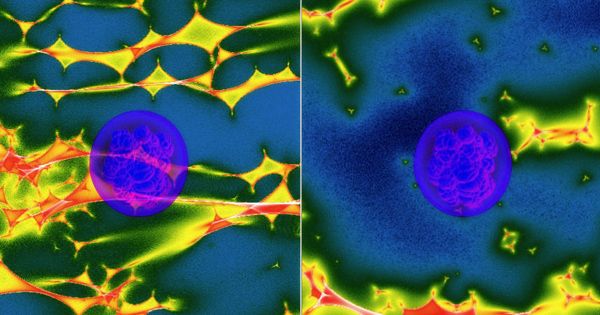
The small remaining variations in the intrinsic maximum brightness restricted the accuracy with which dark energy could be tested since the observed maximum brightness of the supernova is used to infer its distance. Despite several groups’ advances over the last 20 years, supernovae studies of dark energy have remained limited until now due to these variations. The SNfactory’s latest findings are the outcome of a multi-year analysis aimed solely at improving the accuracy of cosmological measurements made with supernovae. The maximum brightnesses of distant supernovae billions of light-years away must be compared to those of local supernovae “just” 300 million light-years away in order to calculate dark energy.
Hundreds of nearby supernovae were analyzed in great detail by the team. Every supernova was observed several times over the course of a few days. Each measurement looked at the supernova’s spectrum, recording its intensity through the visible light spectrum. The spectra were measured using a custom-built instrument called the SuperNova Integral Field Spectrometer, which was mounted at the University of Hawaii’s 2.2-meter telescope on Maunakea. Indeed, physicist Hannah Fakhouri, then a graduate student working with Perlmutter, made a crucial observation that led to today’s findings several years ago. As she examined a large number of spectra taken by the SNfactory, she discovered that the spectra from two separate supernovae seemed to be almost similar in many cases.
Any of the 50 or so supernovae were almost identical twins. When a pair of twins’ wiggly spectra were superimposed, the eye only saw a single track. This observation is used in the current study to model the activity of supernovae in the timeframe leading up to their maximum brightness. The number of supernovae used in the current study has nearly quadrupled. This increased the size of the sample, allowing machine-learning techniques to be used to classify the twins, leading to the discovery that Type Ia supernova spectra differ in just three ways.
The intrinsic brightnesses of supernovae are also mainly determined by these three observed variations, allowing supernova distances to be measured to a remarkable precision of about 3%. The SNfactory collaboration includes Berkeley Lab, the Laboratory for Nuclear Physics and High Energy at Sorbonne University, the Center for Astronomical Research of Lyon, the Institute of Physics of the 2 Infinities at the University Claude Bernard, Yale University, Germany’s Humboldt University, the Max Planck Institute for Astrophysics, China’s Tsinghua University, the Center for Particle Physics of Marseille, and Clermont Auvergne University.
Importantly, this new approach is free of the prejudices that plagued previous approaches when comparing supernovae discovered in various types of galaxies. Since close galaxies differ from distant galaxies, there was concern that this dependency would lead to false readings in the dark energy calculation. This problem can now be greatly alleviated by using this new method to measure distant supernovae. The Department of Energy’s Office of Science, NASA’s Astrophysics Division, the Gordon and Betty Moore Foundation, the French National Institute of Nuclear and Particle Physics and the National Institute for Earth Sciences and Astronomy of the French National Centre for Scientific Research, the German Research Foundation, the German Aerospace Center, the European Research Council, Tsinghua University, and the National Natural Science Foundation of China all contributed to this research.
Information Sources:
